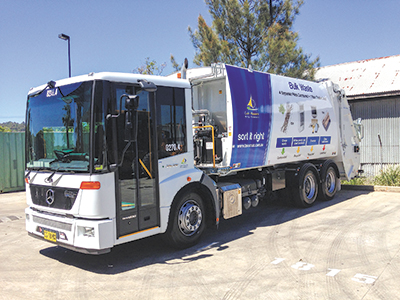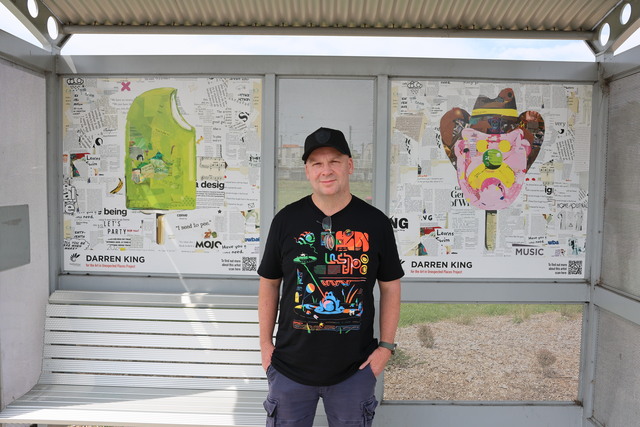Lake Macquarie City Council in New South Wales has introduced vehicles that are easy for drivers to enter and exit during bulk waste collections.
Low-entry trucks have not been available to the Australian market until recently, with two manufacturers now offering low-entry cabs especially designed for waste collection applications.
In 2015, a group of six Lake Macquarie City Council officers, including supervisors, fleet staff, workshop staff, and drivers conducted extensive evaluations on the Mercedes Benz Econic and Dennis Eagle cab chassis to assess their overall suitability for local operational conditions.
In addition to standard evaluation methods for fleet assessment, the group test-drove the vehicles and performed operational tests with assessments of safety, comfort and visibility. From these assessments, the new Mercedes Benz Econic truck came up as their first choice, and Council has since added three of these vehicles to its fleet.
In Lake Macquarie City, householders are able to leave up to two cubic metres (one box trailer load) of combined waste material, including bulky household items, metal, green waste, mattresses and e-waste, on their kerbside at allocated pick up times, twice a year.
To provide this service to the whole City, Council has drivers operating bulk waste collection trucks all year round. These employees have particular workplace health and safety needs, as their work requires them to enter and exit the truck’s cabin repetitively throughout the day.
“In normal truck applications, operators probably only need to enter and exit the cabin a few times a day, but our kerbside bulk waste collectors need to do this many times a day,” said Plant and Fleet Officer Daniel Downie.
“Traditional truck cabins can be awkward to enter and exit, so the evaluation team was very interested in assessing which of the two low-entry cabs available might best meet operational needs.”
These truck cabins have a very low entry and exit height, akin to that of a bus, making it safe and comfortable for bulk waste collection tasks.
Operational staff reported that the interior space of the cabin was ample, with plenty of space for workers and their gear. The overall height of the cabin’s interior means that it is a true walk-through design, which makes life safer and easier, as staff can enter and exit the cabin from the kerb side of the truck rather than in traffic from the roadside.
Although the large windscreen and side windows provide excellent overall visibility, the assessment team identified that the lack of a rear window in the cabin was an issue for their operations. Drivers use the rear window to monitor the compaction body’s ejection blade. Prior to delivery and on the evaluation team’s recommendation, Council had an additional camera fitted to the rear of the cabin to allow drivers to monitor the operation of the ejection blade.
Another benefit of these trucks is full airbag suspension. Compared to traditional spring suspension, it allows for a smoother ride for occupants and is better for the City’s road surfaces. Another benefit is the ability for the driver to both raise and lower the suspension depending on the terrain, a feature that can further assist access into and out of the truck. This feature is particularly useful at waste disposal sites, which can become very muddy in bad weather.
The three low-entry trucks have been very well received by operating staff and have captured the attention and imaginations of other departments.
“Since acquiring three low-entry trucks for its waste collection fleet, other Council departments have seen ways this style of cab chassis could be used to benefit their operations, such as in our road patching works, where workers also need to enter and exit the truck many times in their day,” said Mr Downie.








